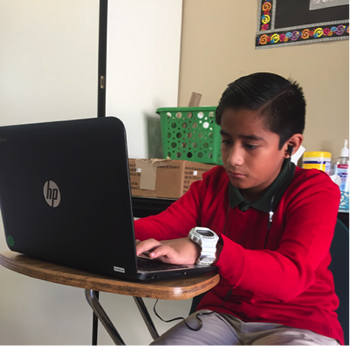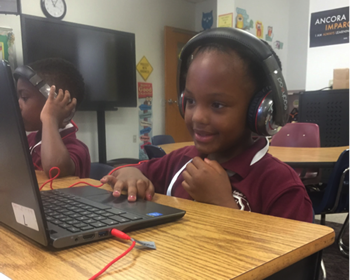Warning: I was a Philosophy major, and old habits die hard. Please indulge my philosophical musings before we jump into more actionable information.
At the heart of Christianity lies the belief that every human being is created in the image and likeness of God. This central tenet of our faith should influence all of our actions, but we all know there are some instances in which this principle is easier to uphold than others.
 Pope Paul VI writes in Gravissimum Educationis that "all men [sic] of every race, condition and age, since they enjoy the dignity of a human being, have an inalienable right to an education." The challenge for many Catholic schools is that they sometimes lack the resources to offer to each student an education that meets his or her needs, and the education every student deserves as a child of God.
Pope Paul VI writes in Gravissimum Educationis that "all men [sic] of every race, condition and age, since they enjoy the dignity of a human being, have an inalienable right to an education." The challenge for many Catholic schools is that they sometimes lack the resources to offer to each student an education that meets his or her needs, and the education every student deserves as a child of God.
In our own research and experience, however, we have seen blended learning empower teachers and leaders of Catholic schools to help students of all types. One population of students for which this is particularly true is English Language Learners (ELL), a group that is becoming especially important in Catholic schools as the proportion of Catholic Latinos continues to rise. Many software programs used in blended classrooms allow students to hear the words they see on the screen or offer students real-time help in their native language, which are both important supports and tools to facilitate further inclusion (if this interests you, check out this iNACOL webinar!). Think Through Math, for example, provides live tutors who speak both English and Spanish who can help students work through pain points in their assignments.
 But blended learning's ability to facilitate inclusion is not limited to English language learners. At Divine Providence Academy, I talked with a fifth-grader who was working independently on seventh-grade math in her third- through fifth-grade classroom. She explained to me that she was working ahead of most of her peers, but she liked to help her friends with their grade-level assignments and work ahead independently. At Holy Angels Catholic School, six students with individualized education plans are able to remain in their fifth- and sixth-grade multi-age classroom for the majority of the day. Their instruction is individualized in the classroom thanks to the blended-learning model, so they don't have to be pulled away from their peers for most of the day. In these cases, blended learning is used to treat all students with the dignity that Catholic schools know they deserve.
But blended learning's ability to facilitate inclusion is not limited to English language learners. At Divine Providence Academy, I talked with a fifth-grader who was working independently on seventh-grade math in her third- through fifth-grade classroom. She explained to me that she was working ahead of most of her peers, but she liked to help her friends with their grade-level assignments and work ahead independently. At Holy Angels Catholic School, six students with individualized education plans are able to remain in their fifth- and sixth-grade multi-age classroom for the majority of the day. Their instruction is individualized in the classroom thanks to the blended-learning model, so they don't have to be pulled away from their peers for most of the day. In these cases, blended learning is used to treat all students with the dignity that Catholic schools know they deserve.
Effectively, blended learning is empowering schools to take the floor and ceiling off of the traditional classroom so that the needs of every child are met. We applaud the countless Catholic-school teachers who have bent over backwards for years to meet the varied needs of their students, but an innovative education model will make their lives easier and their teaching even more powerful. In short, blended learning offers a new set of tools and strategies that may be able to make personalized learning and inclusive education a reality in Catholic schools.
Do you have a story that illustrates blended learning's impact on inclusion? Let us know by emailing eanthony@nd.edu.
 Alliance for Catholic Education
Alliance for Catholic Education
